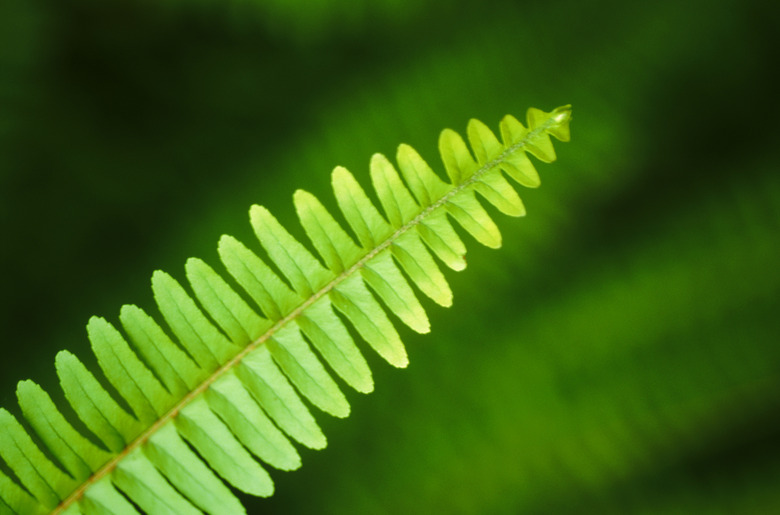Do Ferns Like Sun Or Shade?
Ferns are often thought of as lush plants that grow only in shady, moist conditions such as forest floors. Generally, this is an accurate assessment. However, ferns are resilient and can grow in a variety of light and soil conditions. While many ferns require at least some shade, others do well in bright sunlight. Some adapt well to indoor conditions and make popular houseplants. Surprisingly, there are even desert ferns that withstand full, hot sun and dry soils.
Ferns for Full Shade
Step 1
When a fern grows in full shade, it receives no direct light from the sun but may still get reflected light. Plants in dense, full shade don't even get reflected light. However, many ferns are well-adapted to growing in these conditions. Examples include Western maidenhair fern (Adiantun aleuticum), hardy in U.S. Department of Agriculture plant hardiness zones 3 through 9, deer fern (Blechnum spicant) and soft shield fern (Polystichum setiferum, also called Alaska fern), both hardy in USDA zones 5 through 9.
- Ferns are often thought of as lush plants that grow only in shady, moist conditions such as forest floors.
- However, many ferns are well-adapted to growing in these conditions.
Ferns for Full Sun
Step 1
Gardeners with no shade in their landscapes needn't forego ferns altogether. Several ferns tolerate direct sunlight all day, as long as it's not extremely hot and there is ample moisture. Some ferns that tolerate full sun include male fern (Dryopteris filix-mas), hardy in USDA zones 4 through 8, sword fern (Polystichum munitum), hardy in USDA zones 7 through 10, and lady fern (Athyrium filix-femina), hardy in USDA zones 3 through 9.
Ferns for Dry Shade
Step 1
Most areas in which ferns thrive have moist soils. Dry, shady areas present a difficult problem for gardeners, since few plants tolerate both conditions. However, a few ferns manage to grow well in dry shade. Giant chainfern (Woodwardia fimbriata), hardy in USDA zones 8 through 9, licorice fern (Polypodium glycyrrhiza), hardy in USDA zones 6 through 8, and interrupted fern (Osmunda claytoniana), hardy in USDA zones 2 through 9, all grow well in dry shade.
- Gardeners with no shade in their landscapes needn't forego ferns altogether.
- Dry, shady areas present a difficult problem for gardeners, since few plants tolerate both conditions.
Desert Ferns for Full Sun
Step 1
Desert gardeners might not realize that they can grow ferns, too. Ferns that grow in desert conditions are referred to as xerophytic. They have adapted to the harsh environment by growing waxy coatings, possessing a reflective surface or the ability to die back and subsequently rejuvenate after being watered. Some examples include hairy lip fern (Cheilanthes lanosa), hardy in USDA zones 5 through 8, and wavy cloak fern (Astrolepis sinuata), hardy in USDA zones 8 through 10.
References
- Hardy Fern Foundation: Choosing the Right Fern for Your Site
- Galveston County Master Gardeners: You Say It's Partial Shade, Your Plants Say It's Partial Sun
- Great Plant Picks: Western Maidenhair Fern
- Perennials.com: Blechnum Spicant
- Monrovia: Alaskan Fern
- Rainy Side Gardeners: Dryopteris Filix-Mas
- The Wild Garden: Polystichum Munitum (Sword Fern, Christmas Fern, Sword Holly Fern)
